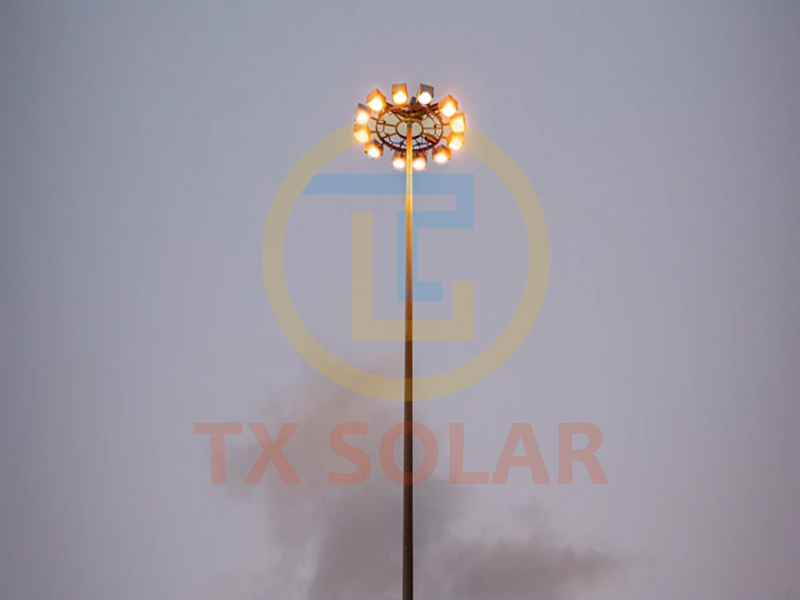High mast lights are an important part of urban and industrial lighting systems, providing powerful lighting for large areas such as highways, sports venues and industrial complexes. These tall structures are designed to hold multiple light fixtures at a considerable height, ensuring wide coverage and high visibility. There are two main types of high mast lights: automatic lifting and non-lifting. Each type has its own unique features and benefits to meet different lighting needs and requirements.
The automatic lifting high mast light is equipped with a sophisticated mechanism that can automatically raise and lower the lamp. This feature offers several benefits, including ease of maintenance and increased security. The ability to lower fixtures to the ground allows maintenance and repairs to be performed without the need for specialized equipment or extensive scaffolding. This not only reduces maintenance costs but also minimizes the risk of accidents and injuries caused by working at heights.
In addition, automatic lifting and lowering of high mast lights enhances the flexibility of lighting management. The ability to adjust the height of the fixture enables customized lighting solutions to suit specific events or requirements. For example, in a sports stadium, lights can be lowered for routine maintenance or raised to provide optimal illumination during games. This adaptability makes automatic lifting high mast lights a versatile and efficient option for a variety of applications.
Non-lifting high mast lights, on the other hand, are fixed at a specific height and do not have the ability to be raised or lowered. While they may lack the flexibility of automatic lift lights, non-lift high mast lights come with their own set of advantages. These lights are generally more cost-effective and simpler in design, making them a practical choice for applications where height adjustment is not a priority. Additionally, non-lift high mast lights are known for their durability and reliability, requiring minimal maintenance and providing consistent lighting over time.
When considering installing high mast lights, it is critical to evaluate the specific lighting requirements and environmental conditions of the intended location. Factors such as wind loads, soil conditions and the presence of nearby buildings may influence the choice between automatic and non-lifting high mast lights. For example, in areas prone to strong winds, self-lifting high mast lights can provide greater resilience by lowering the luminaire during adverse weather conditions, thereby reducing the risk of damage.
In addition, technological advancements have promoted the development of energy-saving high-pole lighting solutions. Both self-lifting and non-lifting high mast lights can be integrated with LED luminaires, resulting in significant energy savings and reduced environmental impact. LED high mast lights provide bright, even lighting while consuming less electricity, helping to reduce operating costs and meet sustainability goals.
In conclusion, high mast lights play a vital role in providing effective lighting for large outdoor areas, and the choice between automatic lifting high mast lights and non-lifting high mast lights depends on specific requirements and preferences. Auto-lift high mast lights offer flexibility, easy maintenance and enhanced safety, making them suitable for dynamic lighting needs. Non-lift high mast lights, on the other hand, are known for their simplicity, durability, and cost-effectiveness, making them a solid choice for static lighting applications. With the integration of energy-saving technologies, high mast lights continue to evolve to provide sustainable, efficient lighting solutions for a variety of environments.
Post time: Jul-19-2024

